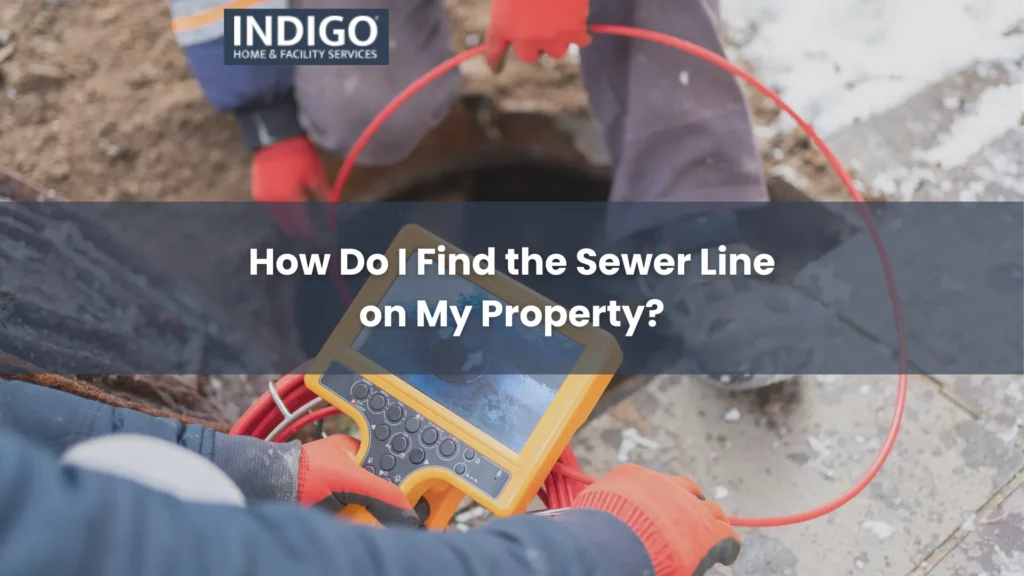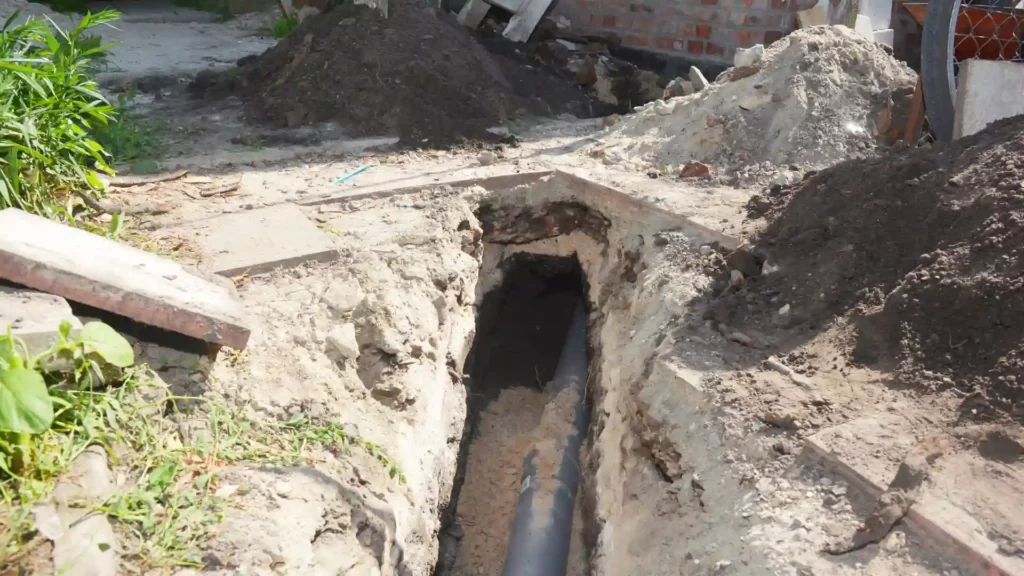
Your home’s plumbing system isn’t the most glamorous part of your house, and most people don’t think about their pipes until something goes wrong. However, it’s important to know how to find the main sewer on your property. Locating water lines and knowing how to find the sewer line can help you maintain your drain line or septic tank and avoid serious issues with clogged or burst pipes.
Today, we’re helping homeowners like you answer the question, “How do I find the sewer line on my property?” and learn more about the underground sewer system in their house.
Your Home’s Sewer, Explained
Every drain in your house empties out into one main sewer line that transports waste and wastewater from your house to either your septic tank system or the local municipalities’ sewer and wastewater system. The sewer lines can get clogged, though, which can cause slow draining or no draining at all. In addition to the inconvenient (and sometimes smelly) issues of a stopped-up or slowly draining drain, clogged pipes can cause more serious problems.
If a clog gets too big, it can cause excess pressure on the pipe, causing it to leak at the joinings or even burst – which is a big problem.
When you know where the underground utility line is located, it’s easier for you to tell a plumber where to find the access points for repairs, cleaning, or maintenance. In addition, it’s critical to know where your home’s sewer line ends and that of the municipal sewer begins. If there is a leak or burst pipe, it may be their responsibility to correct it, not yours.
How to Find the Main Sewer Line from House to the Street
You may need to do a little bit of searching to find the sewer line in your house. It’s often in the garage, basement, or crawl space. Look for a pipe about four inches wide, with a square knob, notch, or a screw cap on top.
Many houses have an indoor sewer cleanout point, although some may have one outside instead. You may not even have one in your house or yard at all. Calling a plumber for help can save you a lot of time and headaches in doing pipe-locator detective work.
How Do I Find the Underground Sewer Line in My Yard?
If you can’t find anything that looks like a main sewer line in your house, basement, or garage, it’s likely in your yard. Exterior sewer line access points are usually close to the foundation of the house or near the street, where your home’s sewer line feeds into the municipal sewer line.
Usually, the sewer line is easily spotted since it will stick out of the ground a little bit. However, if you have landscaping around your foundation or areas of overgrowth, you may need help finding it. If you can’t find the protruding pipe, you could have a buried sewer cleanout line. If so, it may be located on the side of the house where your main floor bathroom is.
I Still Can’t Locate the Sewer Line – Help!
If you’ve exhausted all possibilities and still cannot find your home’s main sewer line, then there are a few more options that can help you locate it:
- Call the previous homeowner. Chances are, they may have had work done on the sewer line. Or they could have been told where the access point was when they moved in. If you don’t have their contact information, you may be able to talk to the realtor who helped you purchase the house and see if they can help you track them down.
- Contact your municipal zoning office. Your city’s water and sewer office or your City Hall may have maps of the town’s sewage system and can show you where your access point is.
- Call an experienced plumber from Indigo Home & Facility Services. We can help you locate your sewer line and advise you on how often to have drain cleaning services to prevent damaging clogs. We also offer repair services and no-dig pipe replacement or repair services if you have a broken pipe or loose joining.
How Deep Are Sewer Lines Buried?

Residential sewer lines may be buried as shallowly as 18 to 30 inches or could be as deep as five or six feet. In colder climates, the pipes are typically buried below the freeze line in the ground to prevent pipe bursts. When you research the sewer access point for your house, you may also discover how deeply the pipes for your house are buried.
Indications That Your Drain or Drains Are Clogged
Knowing your sewer line’s location is vital to having a drain cleaning service fix a clogged drain. A completely clogged drain could cause a pipe to burst. Even if you don’t have this kind of plumbing emergency, you may have a clog and not realize it. Here are some indications that you should have a plumber check your sewer line:
- A drain is draining more slowly than usual or has standing water
- You aren’t having success with the usual methods of unclogging a drain, like using a plunger or chemical drain cleaner
- The washing machine drain is backing up
- You have multiple backed-up drains in your house
- You can hear gurgling coming from a toilet or drain
- You have backups in the shower after flushing the toilet
Do You Need a Professional Plumber for a Sewer Cleanout?
Whether you think you might have a clog in your sewer line or need help locating it, so you’re ready in case of an emergency, we can help. The experienced plumbing experts at Indigo Home & Facility Services can help you locate your sewer line access point and thoroughly inspect your home’s drains and pipes. We use top-of-the-line tools and techniques to identify clogs in your pipes, carefully and thoroughly remove the clog, and then hydro-jet the pipes to ensure they’re running clean and clear.
Call us today at (512) 608-4999 for all your home plumbing needs.